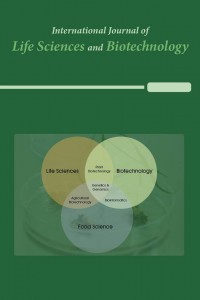An In-silico analysis of the molecular interactions between PmCBP-VP24 and PmCBP-VP28 protein complex to understand the initial initiating events of shrimp WSSV infection
An In-silico analysis of the molecular interactions between PmCBP-VP24 and PmCBP-VP28 protein complex to understand the initial initiating events of shrimp WSSV infection
PmCBP, VP24, VP28, Molecular Interaction, WSSV,
___
- 1. Oakey, J., et al., Global distribution of white spot syndrome virus genotypes determined using a novel genotyping assay. Archives of Virology, 2019. 164(8): p. 2061-2082.
- 2. Saravanan, K., et al., Investigation and confirmation of white spot syndrome virus (WSSV) infection in wild caught penaeid shrimps of Andaman and Nicobar Islands, India. Virusdisease, 2017. 28(4): p. 368-372.
- Yayın Aralığı: Yılda 3 Sayı
- Başlangıç: 2018
- Yayıncı: International Society of Academicians
Sk Injamamul ISLAM, Moslema Jahan MOU, Saloa SANJİDA, Md. SAROWER-E-MAHFUJ, Md. Ashraful ALAM, Yeasmin ARA
Çeşitli evsel atıkların Aureobasidium pullulans tarafından melanin sentezinde kullanılması
Cancer Suppression by Lymphocytes Activated by Cancer-Mediated Exosomes: an In Vitro Study
Aysegul YILMAZ, Irmak FERAH OKKAY, Ali TAGHİZADEHGHALEHJOUGHİ
Melisa BEYHAN YILMAZ, Fahriye ZEMHERİ NAVRUZ, Ecem SEÇGİNLİ
Plant Attractants and Rewards for Pollinators: Their Significant to Successful Crop Pollination
Nur Athirah ZARİMAN, Nurul Alia OMAR, A. NURUL HUDA
Assessment of Food Safety During Covid-19 Pandemic
Cennet Pelin BOYACİ GUNDUZ, Mehmet Fatih CENGİZ
Hatice Aysun MERCİMEK TAKCI, Sema GENÇ, Ayşenur YALÇIN, Eda ÖZDEMİR
Özlem BAKIR, Esabi Başaran KURBANOĞLU
Firdausi ALİYU, Aliyu ADAMU, Roswanira AB. WAHAB, Fahrul ZAMAN HUYOP
